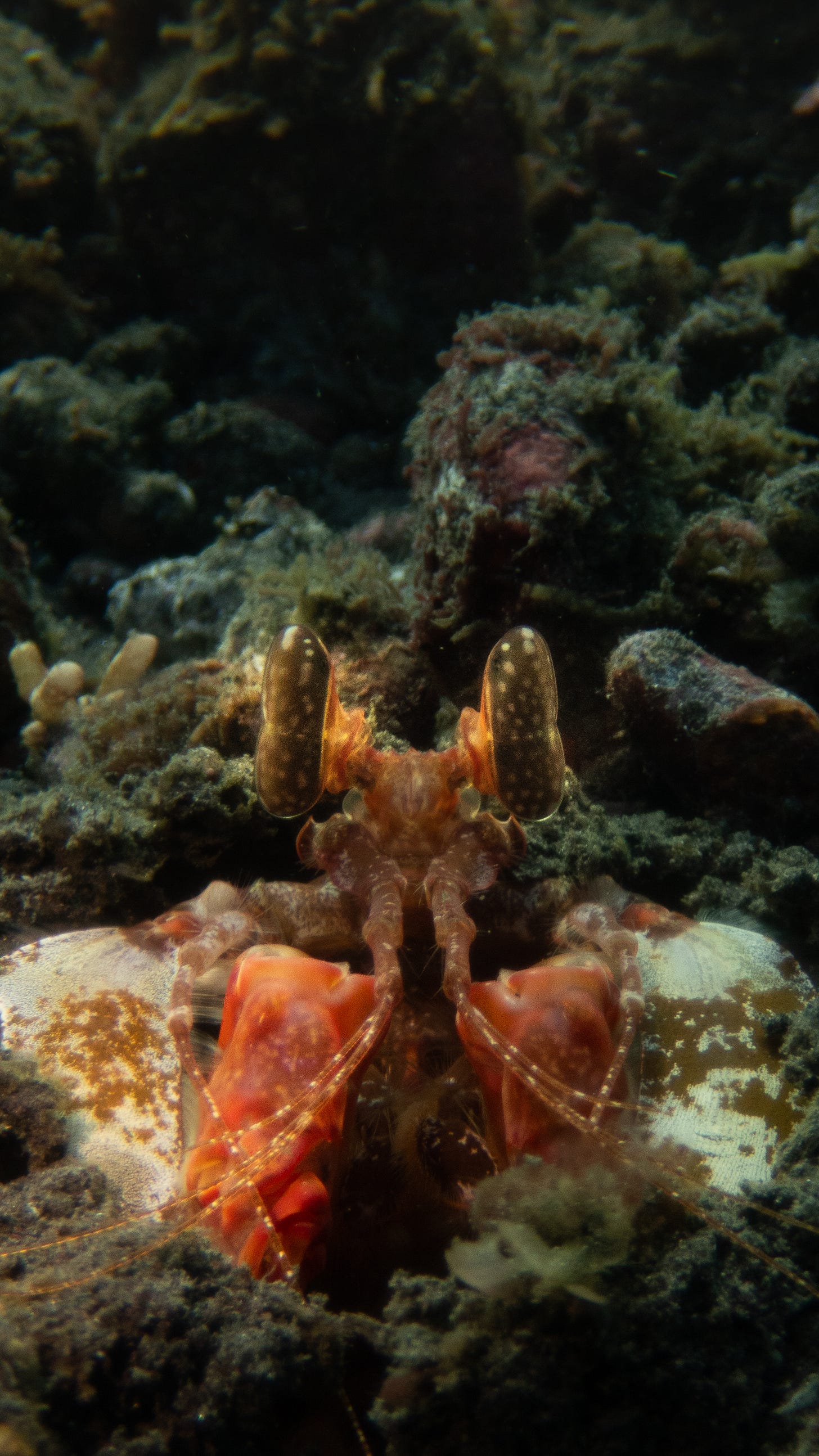Welcome to the latest edition of the Big Blue Bulletin – things have changed just a little bit around here as featured stories will now focus on whales, dolphins, and porpoises, with a little bit of commentary from me thrown in as well. Still, you can expect good news, bad news, and a cute creature in your inbox every Friday.
Let’s dive in 🐬
Ocean news
🗞️ Big news of the week -
🫧 Scientists stunned to see humpback whales trying to send messages to humans
Researchers from the SETI Institute logged 12 close-up encounters in which 11 humpback whales produced 39 bubble rings while calmly approaching swimmers and small boats. Unlike the chaotic bubble rings used to corral prey, these neat, slow-rising rings appeared to be playful and deliberate. Publishing their work in Marine Mammal Science, the team likened the rings to a “candidate signal” in the search for extraterrestrial intelligence—only this one comes from deep below rather than up above.
The work follows the group’s 2021 ‘conversation’ with a talkative whale called Twain, who echoed human-played calls in real time. Now it seems humpbacks may initiate the chat themselves, testing our response with smokelike hoops of air. If that’s true, we’d better start thinking of some good excuses for what we’ve done to their home!
🎣 Search continues for humpback whale entangled in drum line off Sydney’s coast
Rescuers have lost visual contact with an eight-metre humpback whose left pectoral fin was snagged on a drum-line roughly a kilometre off the coast of Newcastle, New South Wales. The whale resurfaced near Sydney’s northern beaches on Sunday, then disappeared again and may now be tracking south.
Large Whale Disentanglement teams from NSW National Parks and Wildlife Service remain on standby, but officials note the animal could still be able to shed the gear unaided. Drum-lines—ropes and buoys set to target sharks or large fish—regularly threaten other species, and advocates say early sightings are critical, as the whale’s erratic speed and southward course suggest it is under stress and off its usual north-bound migration route.
🔊 Echolocation research sheds light on how whales and dolphins use sound
A new study by researchers at the Woods Hole Oceanographic Institution, New College of Florida, UC Berkeley and Oxford University has delivered the first side-by-side brain maps of an echolocating bottlenose dolphin and a non-echolocating sei whale. High-resolution diffusion tractography of the stranded dolphins’ brains suggest that echoes are merged with fine motor control so the animal can probe its surroundings much like we use our hands, rather than merely “see” with sound.
The sei whale lacks this circuitry, highlighting just how differently the two cetacean branches have evolved since their last common ancestor. The authors say such wiring diagrams will let scientists test how active sensing emerged in toothed whales and could inform quieter ocean technologies that avoid masking the species’ acoustic lifeline.
👶 Incredible moment bottlenose dolphin gives birth to calf captured on camera
Brookfield Zoo Chicago has captured the rare moment 38-year-old bottlenose dolphin Allie gave birth in the early hours to her sweet little calf. Keepers are now monitoring them both around the clock with zoo veternarians estimating that the baby is around 33-37 pound. Footage of a dolphin birth is rare and will help staff study early bonding and calf behaviour in a captive setting.
🫣 Brutal footage shows 30 male humpback whales hunting down one female
BBC footage shows the brutal mating chase in tropical breeding grounds such as Tonga and Hawai‘i, where a single female in heat can draw up to 30 bulls. Males vie for pole position by blowing bubbles, chin-slamming the surface and ramming one another as the scramble dives deeper. Injuries are common and, in some years, a competitor may not survive the fight—an extreme price for a chance to mate.
Have a great weekend! 📸
Cover image by Doug Perrine.





The intriguing attempts by humpback whales to message humans could be females looking for help while being chased around by all the aroused males! OK, I admit that I'm reaching a little with this but you did have both news bits in the same post. Just saying. As far as actual communication efforts by the humpbacks, it would be fascinating to see how scientists are working to facilitate this. Would be big, big news if we somehow could establish any rudimentary conversation.